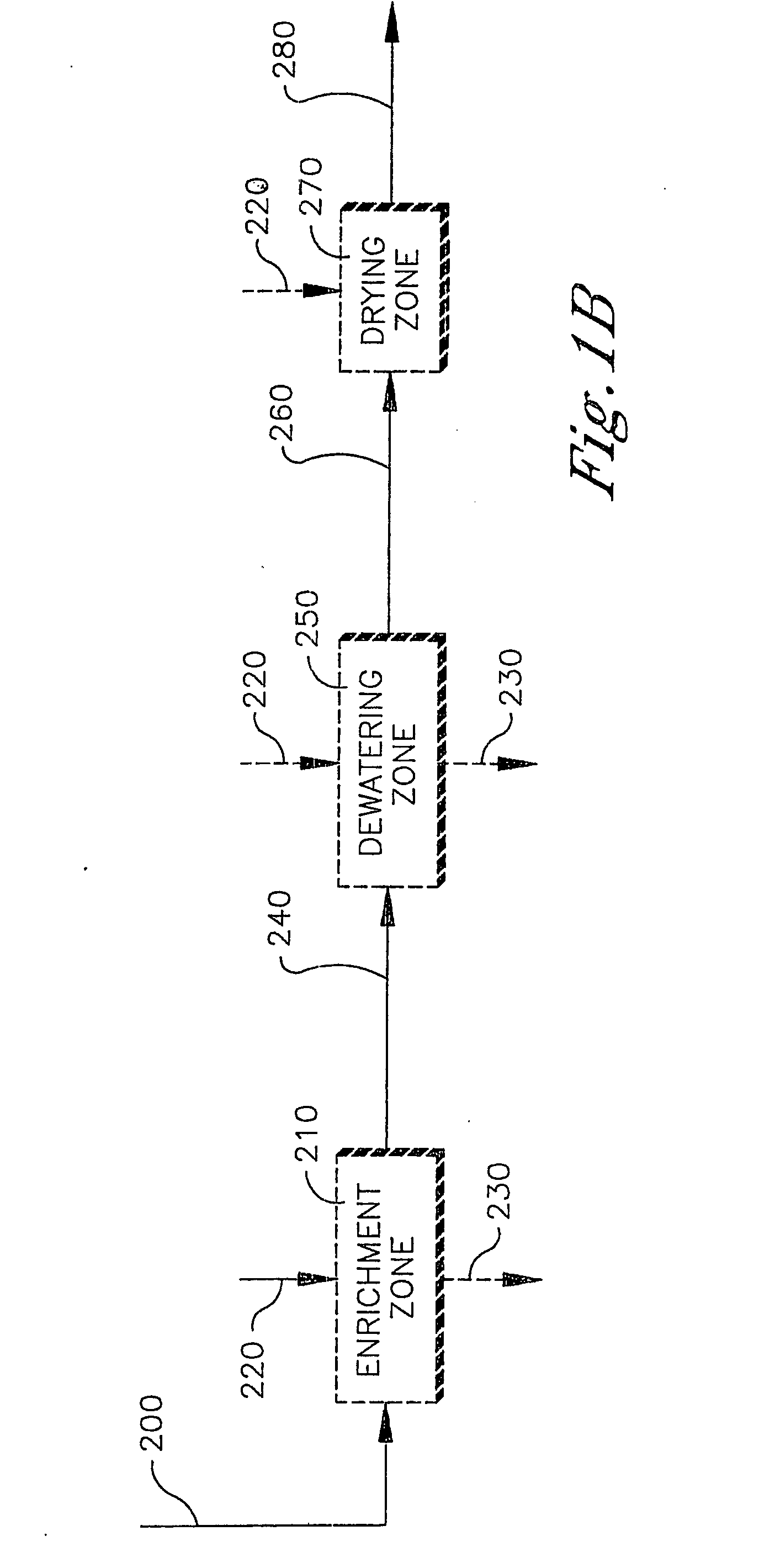Process to produce a post catalyst removal composition
a technology of post catalyst and composition, which is applied in the preparation of carboxylic compounds, separation processes, solvent extraction, etc., can solve the problems of increasing the manufacturing cost of pta, not being able to produce purified, polymer-grade tpa
- Summary
- Abstract
- Description
- Claims
- Application Information
AI Technical Summary
Benefits of technology
Problems solved by technology
Method used
Image
Examples
examples
[0599]An Embodiment of this invention can be further illustrated by the following examples of preferred embodiments thereof, although it will be understood that these examples are included merely for purposes of illustration and are not intended to limit the scope.
PTA Retention Experiments
[0600]The objective of this set of experiments was to determine how the retention of IPA in cooled carboxylic acid composition stream 170 varies with wash temperature and wash ratio of wash feed stream 175 in the catalyst removal zone 180. All experiments utilized a bench scale Pannevis vacuum filter apparatus. Cooled carboxylic acid composition stream 170 was prepared by taking a crystallized slurry composition stream 160 slurry at 30 weight percent solids and boiling away solvent until reaching 50% solids. The slurry was then cooled to 30° C. to generate a cooled carboxylic acid composition stream 170 and charged to the vacuum filter, and then washed with a wash feed stream 175. Both the wash rat...
experiment 1 (
No Cake Wash, No Enrichment Wash)
[0612]401.67 grams of the cooled carboxylic acid stream 170 at 23.9° C. was fed to the catalyst removal zone 180 which was a bench scale Pannevis vacuum filter. There was no wash feed stream 175. The stream 200 wet cake weight was 145.55 grams and the % solids was 89.4%. A sample of the wet cake was submitted to analytical for IPA analyses.
experiment 2 (
80° C. Cake Wash, No Enrichment Wash)
[0613]400.33 grams of the cooled carboxylic acid composition stream 170 slurry at 29.3° C. was fed to the catalyst removal zone 180 which was a bench scale Pannevis vacuum filter. The filter cake was washed with 100.11 grams of 80.2° C. wash feed stream 175. The resulting post catalyst removal stream 200 weight was 139.49 g and the % solids was 99.94%. Samples from the post catalyst removal composition 200 were submitted to analytical for IPA analyses.
PUM
| Property | Measurement | Unit |
|---|---|---|
| residence time | aaaaa | aaaaa |
| temperature | aaaaa | aaaaa |
| temperature | aaaaa | aaaaa |
Abstract
Description
Claims
Application Information
 Login to View More
Login to View More - R&D
- Intellectual Property
- Life Sciences
- Materials
- Tech Scout
- Unparalleled Data Quality
- Higher Quality Content
- 60% Fewer Hallucinations
Browse by: Latest US Patents, China's latest patents, Technical Efficacy Thesaurus, Application Domain, Technology Topic, Popular Technical Reports.
© 2025 PatSnap. All rights reserved.Legal|Privacy policy|Modern Slavery Act Transparency Statement|Sitemap|About US| Contact US: help@patsnap.com



